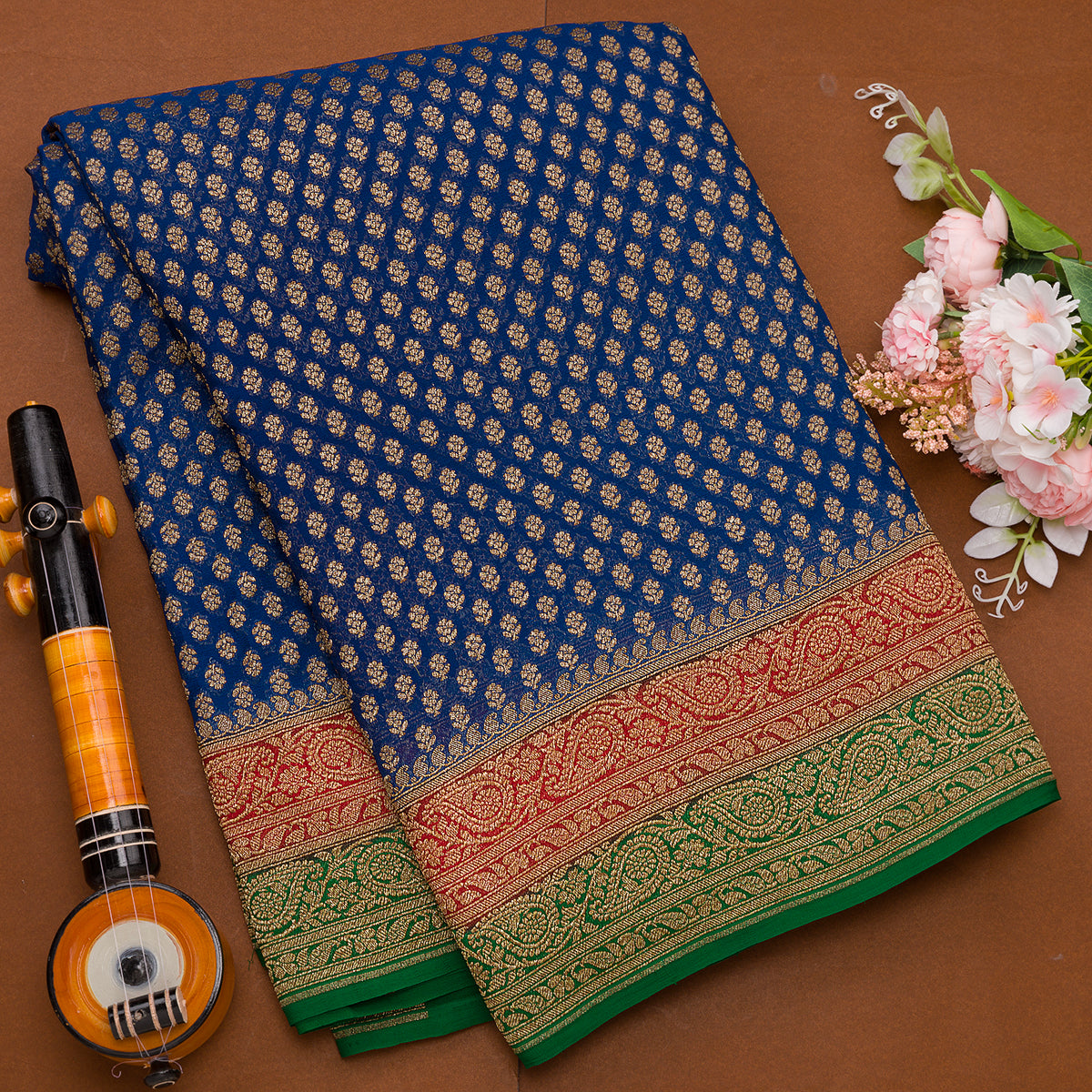Top Tips for Draping a Silk Saree in Flowing Style

Table of Contents
The Silk sarees, with their rich history and cultural impact, remain a symbol of grace in Indian culture. But mastering the art of draping a silk saree, particularly in a flowing style, can seem daunting for first-timers. So, with this guide, you will learn how to wear silk saree in flowing style, making you look more beautiful and graceful.
Understanding the Fabric
Silk, with its smooth texture and fluidity, is the ideal fabric for achieving a flowing drape. However, different silk varieties have slightly varying properties:
- Kanjeevaram silk saree: This luxurious silk drapes beautifully but might require a slightly stiffer petticoat for a structured flow.
- Banarasi Silk Saree: The intricate brocade work in Banarasi sarees can add weight. Opt for a lighter weave or choose strategic pleats to maintain a flowing silhouette.
- Patola Silk Saree: The double ikat technique creates a slightly heavier silk. Consider pre-washing the saree to soften the fabric and enhance its flow.
- Mysore Silk Saree: The smooth texture of Mysore silk is ideal for flowing drapes. Experiment with different pleating techniques to achieve your desired look. If you are looking to try this drape on a wedding or as a bridal wear, the Mysore wedding silk saree should be your go-to.
Remember: Regardless of the silk type, invest in a well-fitted petticoat or underskirt. This provides a smooth base and helps the saree drape gracefully.
Creating the Foundation for Flow
The pleats are the heart of a flowing saree drape. Here's how to achieve them:
- The Classic Pleat: This is the most versatile pleat. Make small, uniform pleats of about 1-2 inches, starting at the end of the saree and working your way towards the pallu (the loose end draped over the shoulder). Pin each pleat securely to the petticoat at the waistline.
- The Broad Box Pleat: For a more dramatic drape, create larger pleats (3-4 inches) with a slight gap between them. This style adds volume and a flowing cascade effect.
- The Waterfall Pleat: This technique creates a stunning cascading effect. Start with smaller pleats and gradually increase their size as you move towards the pallu. Pin them securely to create a waterfall-like flow.
Pro Tip: Experiment with different pleating techniques and see what works best for your saree and body type.
Essential Draping Techniques for a Flawless Look
Now comes the fun part: draping your saree! Here's a step-by-step approach focusing on achieving a flowing style:
-
Pleating the Saree: Neat and consistent pleats are the foundation of a flowing drape. Start by creating uniform pleats along the pallu (end piece). Experiment with the pleat size based on your preference and the saree's width. Pin the pleats securely to the petticoat (underskirt) at the waistline for added stability.
-
Draping the Pallu: For a flowing style, aim for a softer and less structured pallu drape. Instead of a stiff pleat over the shoulder, create loose gathers or gentle folds. Let the pallu cascade over your arm or down your back for an elegant waterfall effect. Secure the pallu with a safety pin at the shoulder for practicality.
-
The Saree Front: Tuck the remaining saree fabric snugly into the petticoat at the waist. Create soft gathers or pleats at the front for a flowing effect. Avoid pulling the fabric too tight, as this can restrict movement and hinder the overall flow.
-
The Finishing Touches: Adjust the pleats and drape to achieve a balanced and flattering silhouette. Ensure the pallu falls gracefully and the saree flows seamlessly from your waist to your feet. Accessorize with a statement necklace, earrings, and bangles to complete your look.
Remember: Practice makes perfect! Don't be discouraged if your first attempt isn't flawless. With a little practice and these tips, you'll be draping sarees like a pro in no time.
Variations for a Unique Flowing Style
Silk sarees in flowing style look wonderful, but the beauty of the saree lies in its versatility. Here are some variations on the basic flowing drape to add a touch of personality:
- The Leheriya Drape: Create soft, wave-like folds in the front pleats for a whimsical and romantic look. This drape works well with lighter-weight silks and adds a touch of bohemian flair. This drape looks even more beautiful with modern soft silk sarees
- The Gujarati Style: This drape features a shorter pallu tucked at the front, creating a unique silhouette. It's ideal for showcasing intricate borderwork and offers a more modern take on the flowing style.
- The Bengali Saree Drape: This style features a distinctive box pleat at the front, creating a structured yet flowing look. This drape is perfect for sarees with rich borders like a pure silk saree for that traditional aesthetic.
Caring for Your Silk Saree
Now that you know how to wear a saree in a flowing saree, let's get into their proper care & maintenance. Here are some essential tips:
- Storage: Store your silk saree in a cool, dry place away from direct sunlight. Use breathable cotton cloth bags or saree covers to prevent wrinkles and dust.
- Washing: Dry cleaning is recommended for most silk sarees. If handwashing is necessary, use a gentle detergent and cold water. Drip dry the saree in a shaded area and avoid direct sunlight.
- Ironing: Use a cool iron setting and always iron on the reverse side of the fabric. Place a thin cloth between the iron and the saree to prevent burning.
By taking proper care of your silk sarees, you'll ensure they continue to drape flawlessly and add a touch of timeless elegance to your wardrobe for years to come.







